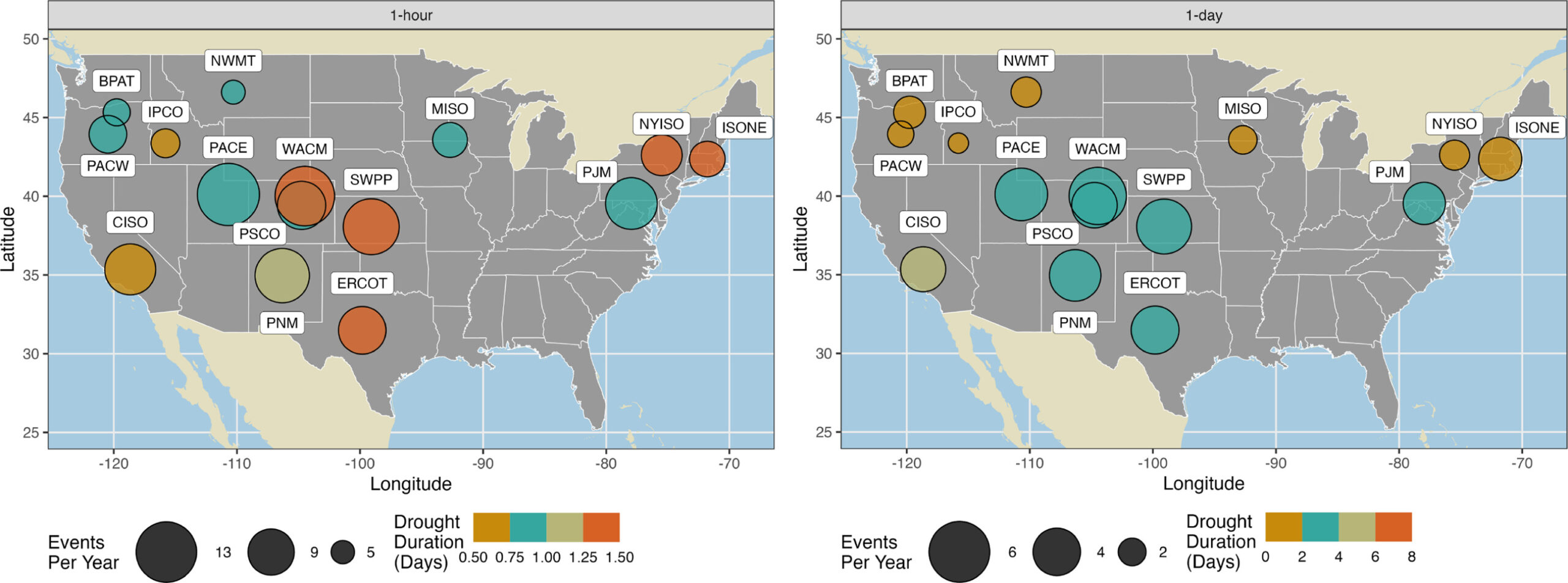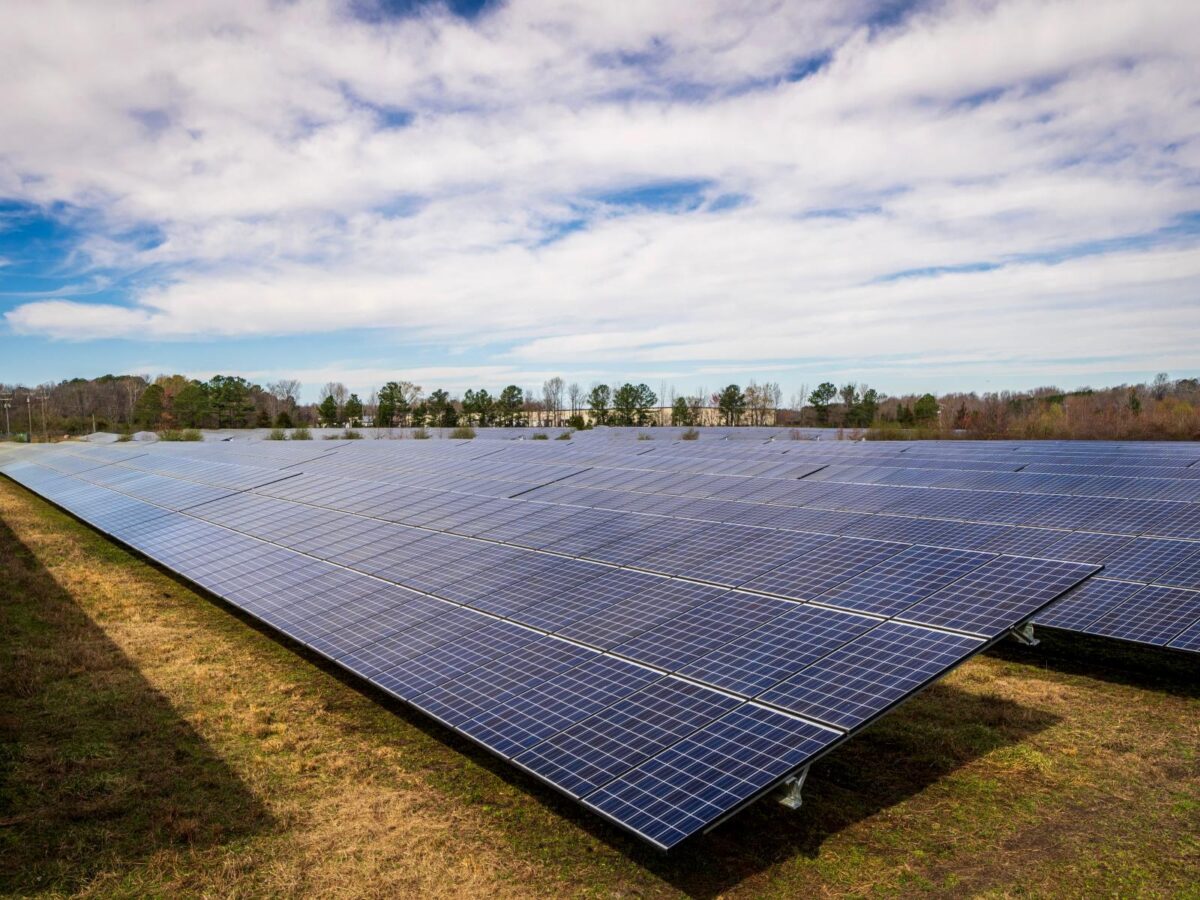The phenomenon that occurs when the sun doesn’t shine and wind doesn’t blow is known as a compound energy drought, and researchers at Pacific Northwest National Laboratory (PNNL) studied these droughts and found that in some parts of the country, they can last nearly a week.
“When we have a completely decarbonized grid and depend heavily on solar and wind, energy droughts could have huge amounts of impact on the grid,” said Cameron Bracken, an Earth scientist at PNNL and lead author on the paper.
It’s important for grid operators to know where, when and for how long energy droughts occur so that they can call on other energy sources as well as manage grid-level battery systems to store enough electricity needed during times when energy is needed most.
The team published the findings October 31 in the journal Renewable Energy and will be presenting at this week’s annual meeting of the American Geophysical Union. The researchers report that the paper is the first to provide a uniform standard of what a compound energy drought is and how long it can last in different parts of the country.
The researchers researched 40 years of weather data and then used historical energy demand data for the entire country in order to understand how often an energy drought occurs when that energy is needed the most. The weather data included wind speeds at the height of wind turbines as well as the intensity of solar energy on solar panels. The team focused on areas where there’s currently a lot of solar and wind generation and looked at the times when the weather data showed stagnant air and cloudy skies that resulted in lower energy generation.
“We essentially took a snapshot of the infrastructure as of 2020 and ran it through the 40 years of weather data, starting in 1980,” said Bracken. “We are basically saying ‘here is how the current infrastructure would have performed under historical weather conditions.’”
The researchers found that energy droughts happen at any time of year in various regions, and for varying frequency and duration. In some areas, Texas, for example, energy droughts are frequent but last only hours. While in other areas, such as in California, they may be of a longer duration but are less frequent. Researchers noted that the longest energy drought happened in California and lasted for six days. Understanding the duration and frequency will help predict the drought’s impact on the grid.

To understand how these droughts might affect energy demand, the researchers mapped their historical, hypothetical generation data onto 40 years of historical energy demand data across the continent. The data showed that “wind and solar droughts happen during peak demand events more than you would expect due to chance,” said Bracken.
What are grid operators to do during an energy drought? According to Bracken, energy droughts do not have to cause an energy shortage, as grid operators can enlist other energy sources such as hydropower, fossil fuels or energy transmitted from other regions. Understanding the frequency and duration of energy droughts will also help inform the deployment of long-duration energy storage projects, said Nathalie Voisin, an Earth scientist at PNNL and coauthor on the paper.
“We’re providing insight on how to adequately design and manage multi-day storage. So when you know an energy drought is going to last for five hours or five days, you can incentivize storage to be managed accordingly,” said Voisin.
The next step in the research is to learn how climate change will affect the frequency and duration of energy droughts. The researchers intend to model energy droughts through the end of the century combined with evolving infrastructure.
This content is protected by copyright and may not be reused. If you want to cooperate with us and would like to reuse some of our content, please contact: editors@pv-magazine.com.









By submitting this form you agree to pv magazine using your data for the purposes of publishing your comment.
Your personal data will only be disclosed or otherwise transmitted to third parties for the purposes of spam filtering or if this is necessary for technical maintenance of the website. Any other transfer to third parties will not take place unless this is justified on the basis of applicable data protection regulations or if pv magazine is legally obliged to do so.
You may revoke this consent at any time with effect for the future, in which case your personal data will be deleted immediately. Otherwise, your data will be deleted if pv magazine has processed your request or the purpose of data storage is fulfilled.
Further information on data privacy can be found in our Data Protection Policy.